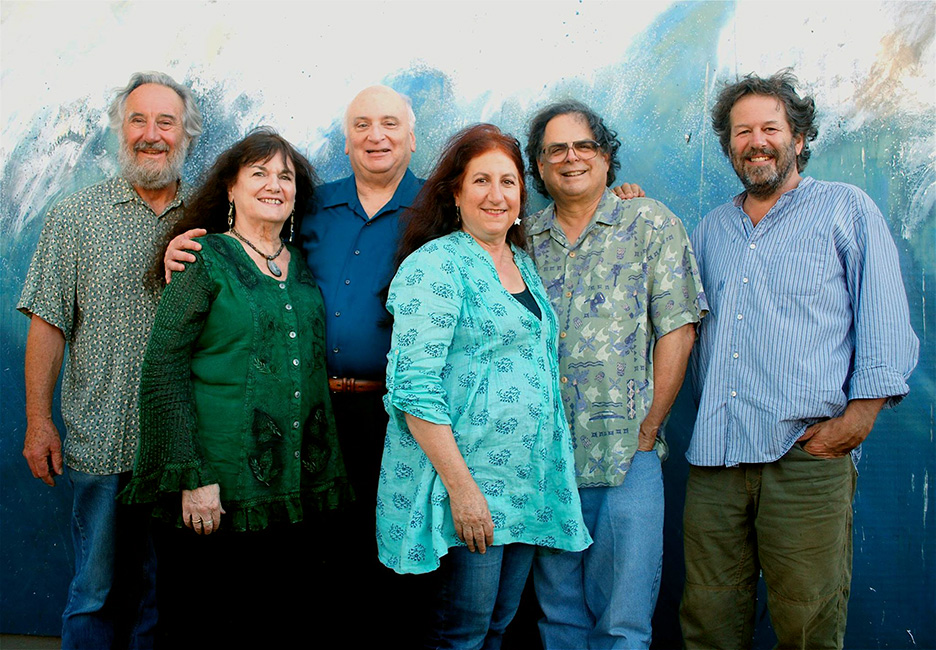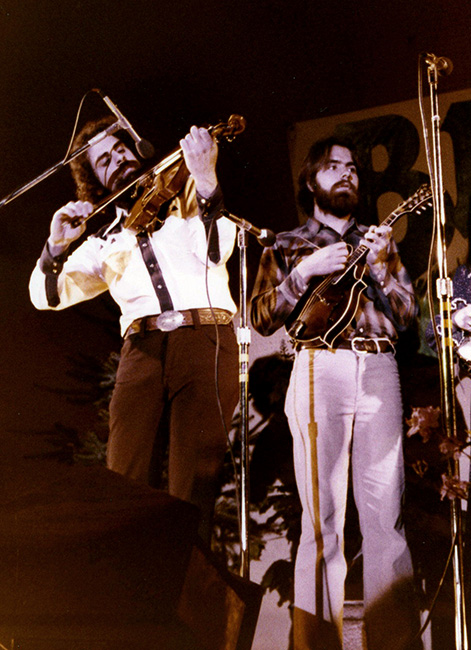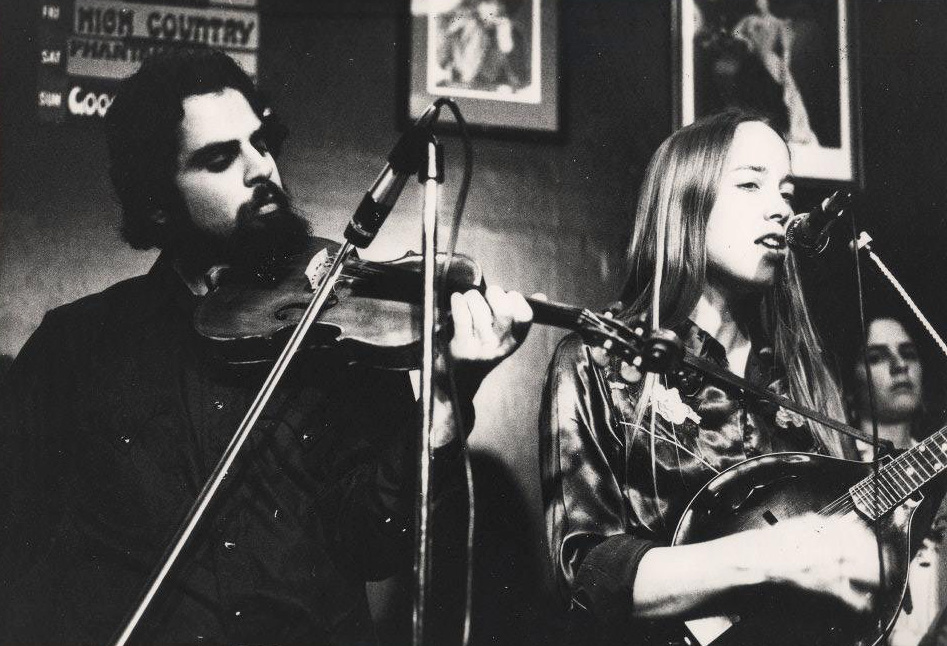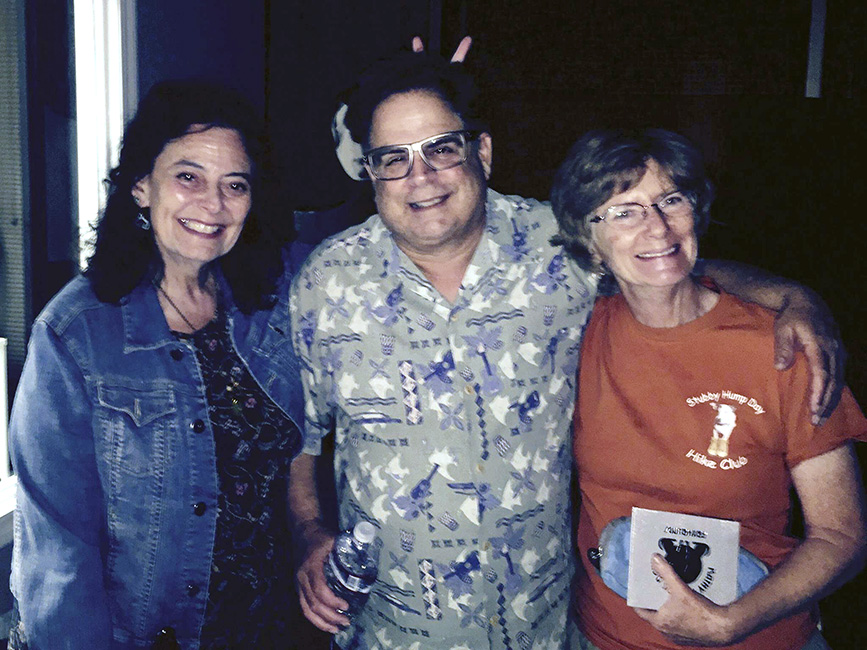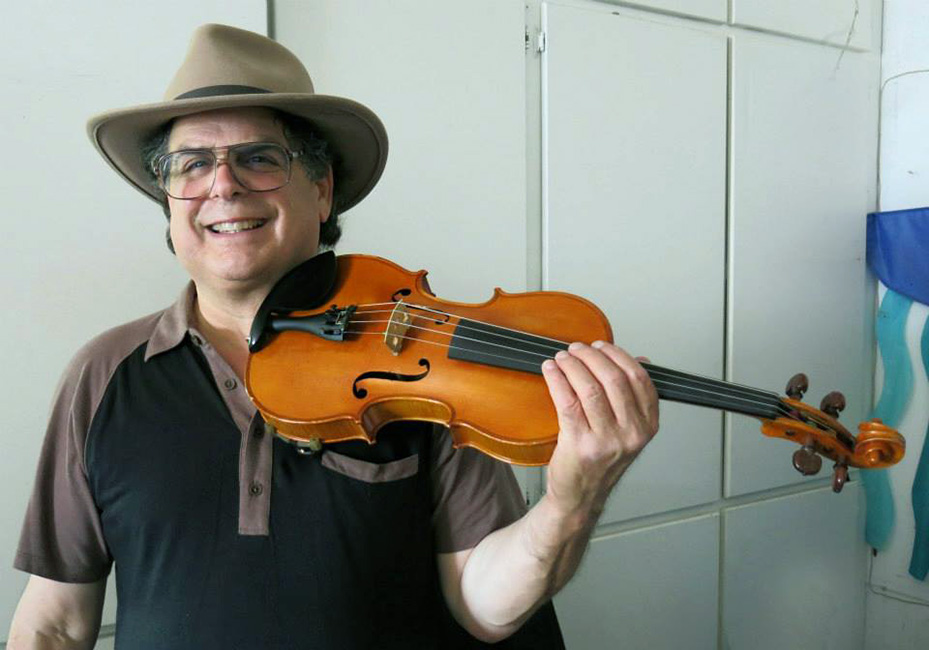
Lifetime California musician Paul Shelasky has literally done it all, and trying to stuff all of his championships, bands, travels, etc into a short bio is like trying to squelch his infamous stage humor, so I won’t even try. I will say that I’m most excited that he is releasing an album of California original fiddle tunes which we discuss in this two-part interview.
Hi Paul. Starting at the beginning, where’d you grow up?
That last term is debatable, but I spent my young years in Petaluma and Novato. My dad briefly was briefly a chicken farmer along with his father-in-law and my maternal grandfather, then he became a TV repairman because he did electronics during the war. He was a concert violinist. He played solo with the Santa Rosa Symphony in like 1957, and was the first violinist for that symphony for like twenty-five years. He also played with the San Francisco and Oakland Symphonies.
This reminds me of Phil Salazar. So you also have a classical background.
Oh, Phil’s dad was a conductor. I don’t have a classical background. My dad showed me how to hold it but I never learned how to read music. Phil on the other hand can read like you wouldn’t believe, and is not only a great fiddler, but also a great classical violinist.
What was your first instrument?
They started me on piano at five, and my sister on violin. I played piano for about a year and was just playing by ear, not learning to read, and the teacher got annoyed with me. Then they started me on cello for about two months and the cello broke or something. I didn’t do it but it went back and never returned. My sister played violin from about the age of eight to thirteen. It wasn’t cool when she was in junior high and she gave it up. Later when she was twenty-five, I taught her to play bluegrass fiddle.
What was your first string instrument?
I started playing folk guitar at age eleven and then, in about 1968, my dad got me a fiddle at the wholesale company when I was eighteen, so I kept on playing continuously, by ear. I listened to all the folk singers like Bob Dylan, and all the early folk singers, and tried to play guitar like Reverend Gary Davis and Blind Blake and especially Mississippi John Hurt, so I was a young white boy trying to sing the blues and playing guitar.
How did you move towards bluegrass?
There was the Grand Ole Opry show on TV, and a show called That Good Ole Nashville Music where I saw Tommy Jackson, and Bill Monroe would play occasionally, so that got me hooked. I had a friend in Junior High whose dad was a hillbilly and made him play guitar and he hated it. I went to his house when I was eleven and he played me Jimmy Martin and Bill Monroe. I just flipped but didn’t do anything about it for the next six years, but I did hear it and liked it.
When did you pick up something other than guitar?
I took up banjo and mandolin and Hawaiian guitar around sixteen or seventeen. Then my dad bought me the fiddle but was just noodling around. I really started practicing like five hours a day when I was twenty.
Was that around the time you started playing some at Paul’s Saloon in San Francisco?
Well, I was sneaking into Paul’s before I turned twenty-one for sure. I was playing with the Phantoms of the Opry. They had Brantley Kearns who was a fabulous fiddler and singer who later went on to play with David Bromberg, Dwight Yoakam, and all sorts of people. Brantley and I played twin fiddles and I played lead guitar, which was a joke. I think he left to move to LA to play with some other folks. It was a good band. We went to Bean Blossom and won the band contest, which allowed us to come back the next year and perform there. That band lasted until ’75 or so when Pat Enright went to Nashville and joined the Nashville Bluegrass Band.
What was next?
Well the Good Ol’ Persons formed as an all-woman band, then when my sister left, I took over mandolin and Laurie played fiddle. Kathy Kallick was playing bass at the time.
Were you at the first CBA Father’s Day Festival at the same Nevada County Fairgrounds location that is used today?
Oh yeah, in ’76 we played at the gig in Fairfield that was the precursor to the festival, and that’s what the CBA Founders Celebration gig on August 22 for Carl Pagter was commemorating.
How many different bands have you played at that festival with?
Well, a lot. Of course, I played with the Good Ol’ Persons and Ed Neff’s band, Blue and Lonesome, Craig Wilson’s band, Old Pals, my band from Disneyland, the Thunder Mountain Boys who doubled as a swing band, the Rhythm Brothers, and with a banjo player from LA named Jeff Ruff (also known as Cody Bryant). I think I played there with the Coyote Brothers, which is an incredible band. They had Tom Sauber on guitar who produced Patrick Sauber, as you know. Garry Vanderlinde on banjo and steel guitar, Walden Dahl on bass, and I played mandolin and fiddle. That was a really fine traditional band. Also, the Fog City Ramblers with Mary Gibbons, Chris Lewis, my sister, myself, and Avram Siegel on banjo, and probably a lot more that I can’t remember.
Talk about the various Good Ol’ Persons reunions.
We had a great reunion in 2015 or ’16 at Telluride with Annie Staninec and Darol Anger. Lots of good pickers were there, like Tim O’Brien. I left the band in 1987, then they had five or six more years with Kevin Wimmer on fiddle. There were other reunions, the one at Grass Valley was a lot of fun. We’re senior citizens now, but still sound great with one rehearsal. I was in the band twelve years, nine with John. We recorded a lot and I thought we always sounded good. My sister, Sue, was in the original lineup and when she left, I took her place on mandolin and twin fiddles with Laurie.
Was that all before you went to LA?
Pretty much. As I mentioned, that band had a weekend off and we came up to play the Father’s Day Festival. I also came up with the band Lost Highway after Disneyland.
Have you ever had a day job?
I’ve had day jobs sporadically, mostly working in retail music stores and as an advertising writer and product developing guy in musical wholesale. Since Junior College, I don’t think I’ve ever had a job outside of music some way or the other.
So you went to college?
I did. First Marin Junior College where I got an Associate of Arts degree. I then went for a year to Sonoma State as an anthropology major. About the time I was thinking of graduating, I went to Bean Blossom and I heard Kenny Baker and all these other guys and I said, this is what I want to do. I told my parents I was gonna drop out of college to play music for a living and it did not go over well.
Well good for us. Tell us about your time in LA.
We went there in ’87, joined Disneyland, and left in like 2002. I stayed there and worked at a really good music store for a while.
Was that McCabe’s?
No, I played at McCabe’s but this was called World of Strings in Long Beach. I played in a number of good bands there, played a lot of traditional jazz, and in Johnny Crawford’s 1928 Jazz Orchestra. Johnny was the son in the TV show, The Rifleman. He was a band leader who just passed away, but someday when you put new batteries in your phone, I’ll tell you lots of stories about Johnny Crawford.
Is that when you got more into jazz?
I got into jazz as soon as started playing bluegrass but I didn’t play a lot of it professionally until I got to LA. I played a lot of the major trad festivals and went to Europe.
This is the band that played at Disneyland?
Yes, we played five years at Disneyland. They played for about seven years previous to me joining.
Was there just that one stage there, Frontierland?
We played at four different stages there. Frontierland, New Orleans Square, and we played in idiotic costumes. The guitar player switched to washboard, the bass player played tuba and it was a lot of fun. In Tokyo, they called it Westernland and we only played country music.
How long were you in Japan?
Eight months with the trio that only played bluegrass and country. I played fiddle with a guy in a club who played trumpet and sounded like Louis Armstrong. Japan was very, very fun. There was of course a traditional bluegrass scene there and we jammed with all of them, and went to a bluegrass festival in Chiba.
Rocky Top in Tokyo is the one most widely talked about.
Well yea. It’s about twenty-five square feet and there’s a little elevator that goes up that will fit one person. No sumo wrestler in the world could fit in the elevator, and we happened to play there right when Bill Monroe passed away so there was like a celebration for him, but Rocky Top was really fun.
Did you ever play Knott’s Berry Farm?
I never did. Everyone I know played there and I may have subbed there once or something. We also played once at Paramount Studios and wherever they did Jurassic Park (Universal Studios). After Disneyland, I also played eight times at SeaWorld in San Diego.
On a different note, I saw where you were the CA State champ on guitar.
Well sorta, yes. I played easy stuff, slow, and clean, and there were a lot better guitar players in the contest. I would win a few contests years ago, but there were a lot of great players who probably should have beaten me. Old guys playing absolutely perfect. I would always get nervous in contests.
How did you get into the band Lost Highway?
They were reforming and I was in Japan and there weren’t that many traditional bluegrass fiddlers around that weren’t busy like Dennis Fetchet who was playing every day at Disneyland. So Ken Orrick wanted me to audition, and they waited until I got back from Japan. It was an excellent band with Jeff Harvey on mandolin, Marshall Andrews on bass, Ken on guitar, and Dick Brown on banjo. Just great, and their singing was first-rate and the main attraction.
That was a lot of touring, wasn’t it?
We did tour a lot, about 150 to 200 dates a year.
You must have gotten some studio gigs then as well.
You know, amazingly, being as I’m a terrible sight reader, I’ve never tried to get studio work. Now Byron Berline who doesn’t read can get studio work because he’s Byron Berline and he doesn’t need to read. And we had a guy Dennis Caplinger who played fifteen different instruments and he could read on all of them. He was a wonderful fiddler and the best banjo player you could ever want to hear. He played everything so he did all these albums on CMH Record’s (Pickin’ On series) where he played five different instruments. So Dennis had most of the studio work along with Richard Greene who reads great and is very, very famous. So those are the guys who got studio work and Bobby Bruce did the swing.
So most of your studio work is up here in Northern California.
I’ve never done much studio work.
Your bio says that you recorded with Grisman, Tony Rice, Frank Wakefield, and others.
OK. I’ll explain that. There was a wonderful Eric Thompson record that Tony and Grisman were on, and I was on that. Rick Shubb and Sandy Rothman were on it. And then I was on one Frank Wakefield album on the Tacoma label, and Frank recorded for me on a demo, and I put two of those tracks out on my upcoming fiddle album.
Did you ever go to Nashville for any length of time?
With the Phantoms of the Opry, Pat Enright, Robbie, and those guys (Paul Shelasky, Laurie Lewis, Gene Tortora, Robbie Macdonald, and Pat Enright), we spent about three months there. As far as moving to Nashville, I’m like a very small minnow in the Pacific Ocean there so I have never gone to Nashville because they have plenty of … you know how to find a songwriter in Nashville, “Oh Waiter.” In other words, any waiter could play better than me and write better songs. I’ve always loved to go to the music stores there but Nashville in the ’70s was a tawdry, depressing place. It was really poor and unappealing, at least the area near the music stores which were the places I hung out, Downtown Broadway.
Yeah. I’ll briefly say I’m Jewish and we didn’t have pork in the house, and where we were staying there was a guy with a push cart and he had barbecue pork sandwiches. Of course, I hadn’t ever had anything like that and I smelled it and after my first bite I said, “Thank you Jesus,” so I discovered barbecue pork in Nashville.
Where did you play there?
I hung out and for two or three months we played various places. We played the Station Inn a bunch, which was a dive. That was when Laurie was in the Phantoms.
Phantoms of the Opry – Live, Radio, KPFA, November 12, 1972
Pat Enright – Guitar, Paul Shelasky – Fiddle, Robbie McDonald – Banjo, Chuck Wiley – Bass, Joe Zumwalt – Mandolin
Did you play there with anyone else?
I went back there to play IBMA with Lost Highway, and we did a great job, and a real traditional guy named Kerry Hay who owned Hay Holler Records immediately signed us up, and we made about six records for them.
Note: This is the end of part 1 of my discussion with Paul. In part two, Paul further discusses his influences, composition, twin fiddles, and his tune Cazadero.

